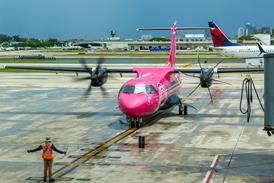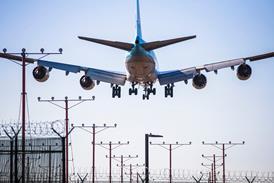After achieving the first hover flight of its Nuuva V300 hybrid-electric cargo drone earlier this year, Slovenian aircraft manufacturer Pipistrel knew the Paris air show would be the perfect place to introduce customers to its striking-looking rotorcraft.
“We felt like Paris would a great venue on the global stage to unveil Nuuva, particularly as a European company,” says Kriya Shortt, chief executive of Pipistrel parent Textron eAviation.
“The number one comment is probably ’I’ve never seen anything like that before.’”

Pipistrel’s Nuuva test article has been expanding the “vertical flight envelope” in Italy following its first hover. The prototype is purpose-built to test vertical take-off and landing manoeuvres using a battery-electric system that drives eight E-811 electric motors.
The first prototype does not have a gas-powered propulsion system for forward flight. Pipistrel plans to achieve a transition from hover to forward flight with a second prototype that will feature an internal combustion motor driving a single pusher prop.
“We are already building the second flight-test vehicle with the intent that will be the fully integrated vehicle,” Shortt says, adding that Pipistrel is on track to fully assemble the second aircraft before year-end.
Nuuva is aimed primarily at the commercial cargo and logistics market, with an eye especially on last-mile delivery. Pipistrel also sees potential for disaster-recovery and humanitarian aid missions, as well as battlefield logistics on the defence side.
Shortt says that one of the aircraft’s main selling points is its simplicity of operations, as the automated system requires ground-monitoring but no direct control from a pilot in the loop.
In terms of the size of Nuuva’s potential market, Shortt says that Pipistrel “continues to solicit customer feedback”.
“We felt like, post-first hover, it was really important to help the world understand what Nuuva is, and we have been listening to a myriad of operators and [hearing about] potential use cases from customers.”


























